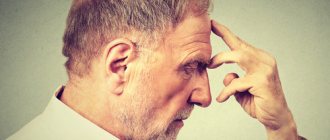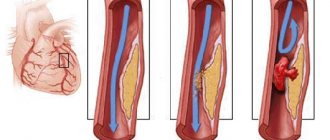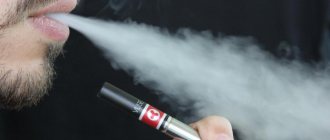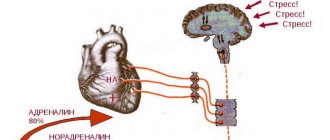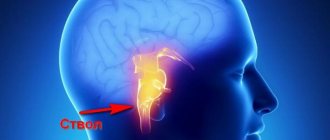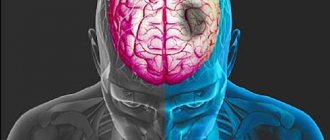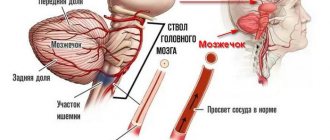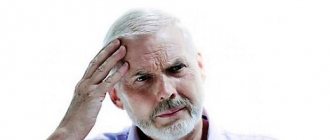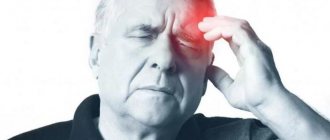The heart and brain are the main parts of our body. Its normal functioning depends on them. Statistics show that heart attack and stroke are very common diseases that often lead to death.
To save a person, you need to know what to fight. Heart attack and stroke are diseases that are often encountered in the modern world. And sometimes each of us can save someone's life. After all, anyone can meet a person on the street who has suddenly staggered or grabbed his heart. But not everyone knows what needs to be done in this situation.
What is a cerebral infarction?
A cerebral infarction is a softening of the substance with the death of cellular structures, as well as glia (the supporting tissue of the nervous system). The change occurs due to ischemic stroke. This type of blood supply disruption is a consequence of the formation of a blood clot in a vessel or the entry of an embolus into its lumen with subsequent blockage. Softening is accompanied by necrosis, but partial recovery is possible because neighboring structures are able to take over the responsibilities of the victims.
A disaster can be avoided if urgent action is taken within 2 hours to eliminate the blood clot using thrombolytic drugs or neurosurgery. If it is not possible to lyse the blood clot, the patient will experience persistent neurological deficits in the future.
Consequences
It is difficult to say which of these two diseases is more dangerous, but the fact that during a heart attack it is more difficult to save a person is an indisputable fact. Although each illness has its own unpleasant consequences, which should be known not only to patients, but also to relatives.
- Paralysis and paresis.
- Amnesia.
- Pain in different parts of the body.
- Numbness of the limbs.
- Dementia.
- Pneumonia.
- Coma.
- Hypotonia and muscle wasting.
Read also: Second stroke coma
- Heart rhythm disturbances.
- Cardiogenic shock is rupture of the heart muscles.
- Post-infarction angina.
- Pericarditis.
- Neutrotrophic disorders of the nervous system.
- Thromboembolic complications.
Doctors believe that damage to the heart is more dangerous because it can lead to breathing and heart rhythm disturbances. Although everything depends on the location of the circulatory disorder, each case must be considered individually.
Causes of cerebral infarction
Softening (the source of a stroke) develops when a number of unfavorable factors affect the body:
- arterial hypertension;
- atherosclerosis;
- diabetes;
- heart defects (congenital and acquired);
- thrombophlebitis of the veins of the lower extremities;
- regular alcohol abuse;
- smoking;
- physical, mental overload (frequent stress, lack of sleep, emotional imbalance).
Interesting: Short-term memory impairment: causes, consequences and treatment
Often the patient experiences several problems at once, which significantly increases the risk of damage.
A frivolous attitude to the treatment of chronic diseases and lifestyle leads to irreversible residual effects.
Symptoms
Signs of heart attack and stroke of the ischemic type are divided into two groups of symptoms. The first includes cerebral syndrome:
- persistent intense headache with dizziness, nausea;
- general weakness with malaise;
- seizures;
- loss of consciousness of varying degrees is observed when large arteries are damaged with the formation of an extensive lesion.
The second group is associated with the localization of the process and the size of the infarction. Focal symptoms indicate a disorder of brain function; the clinical picture develops suddenly or gradually. The developing condition requires urgent hospitalization with emergency therapeutic measures.
Treatment
Therapy is strictly in a hospital setting. A group of medications is prescribed:
- Antiplatelet agents for ischemic lesions. Aspirin and its analogues. Related, but more powerful remedies based on heparitis and other substances are possible. Pentoxifylline. Restore blood flow and nutrition.
- Nootropics. Glycine, Phenibut. Accelerate regeneration.
- Cerebrovascular. Piracetam. Actovegin. To stabilize the supply of nerve fibers with necessary substances.
- Antihypertensive. If there is an increase in blood pressure. Beta blockers (Metoprolol), calcium antagonists (Diltiazem), diuretics are mandatory (Furosemide, if necessary - Mannitol). To reduce the load on the brain and prevent swelling.
The hemorrhagic form requires removal of the hematoma. Promptly.
In the future, everything is decided by rehabilitation and its quality. Recovery takes from 12 to 24 months. The most active reorientation of the brain occurs in the first year. Then the results are not so noticeable.
Read more about rehabilitation after a stroke in this article.
Lifestyle correction is indicated: quitting smoking, alcohol, limiting salt (up to 6 grams), sugar, eliminating fatty foods from the diet. Also optimizing physical activity.
What is the difference between a cerebral infarction and a stroke?
Stroke and heart attack have different origins and manifestations if cerebral circulation is disrupted due to a ruptured vessel. In such a situation, the difference between a stroke and a heart attack will be fundamental, since the hemorrhage develops due to a rupture of the vascular wall. Necrosis develops instantly, and the brain reacts to the disaster with sudden and pronounced swelling.
A typical characteristic of cerebral hemorrhage (bleeding) is a sudden onset (formerly the disease was called apoplexy) with profound loss of consciousness. The severity of the coma is directly dependent on the caliber of the ruptured artery.
A transient ischemic attack does not cause death of brain tissue, since cell hypoxia is temporary. The disease is characterized by the complete disappearance of neurological symptoms within 24 hours, but the signal about the problem cannot be ignored.
Signs of heart attack and stroke
Cerebral infarction is diagnosed based on typical symptoms. You should not ignore or hesitate to seek medical help, because there is a threat to life.
| Symptom name | How it manifests itself | Consequences |
| Hemiplegia or hemiparesis | Complete or partial movement disorder in half of the body | Immobility or limited movement |
| Hemihypesthesia or hemianesthesia | Decreased or absent sensitivity in half the body, face | Possible burns, traumatic injuries |
| Aphasia | Changing speech | Communication difficulties |
| Apraxia and agnosia | Inability to use practical skills, recognize familiar objects and people | Domestic and professional difficulties, loss of orientation and intelligence |
| Agraphia, alexia, acalculia | Loss of ability to write, read, or do math | Difficulty in working with sources of information, in handling money |
| Dysphagia | Swallowing disorder | Difficulty eating |
| Ataxia | Impaired gait and coordination of movements | Problems with walking and maintaining balance |
The reasons must be identified in a timely manner and restoration measures must be started urgently.
Consequences of heart attack and stroke
Restoration of all affected functions is possible within a short time, until the brain cells die. For each patient, its duration is individual, but on average it is 2 hours. During this period, it is necessary to hospitalize the patient and undergo restorative treatment; a prognosis is possible with the likelihood of a complete recovery.
The consequences of circulatory disorders are manifested by the development of irreversible symptoms. When neighboring neurons take over the function of the dead, partial rehabilitation is possible.
Additional Differences
Cerebral infarction differs from hemorrhagic stroke in the predominance of focal symptoms over cerebral symptoms. The difference between a hemorrhagic stroke and an ischemic one is hyperemia of the skin of the face and neck. A characteristic sign is an increase in temperature, an increase in ESR in the blood and moderate leukocytosis.
Simple first aid techniques
In case of cerebral infarction and hemorrhage, immediate measures are taken by nearby people.
The further prognosis for health depends on how first aid is provided.
Before hospitalization of the patient and the arrival of the doctor, it is necessary:
- Lay the person down with his head raised slightly. You can use a roller for this. If you lose consciousness, your head should be turned to the side and slightly tilted forward. This will prevent vomit from entering the respiratory tract. The patient's leg is bent at the knee.
- Turn the patient onto the right side.
- Avoid drinking water and eating.
- Calm the person if he is conscious.
- Ensure maximum immobilization (exclude movements).
- Assess the person’s condition (check the reaction of the pupils and pulse, measure blood pressure, listen to breathing).
- Call an ambulance.
- In case of vomiting, place a basin or any other container.
- Open the window for oxygen access.
- Clear the upper respiratory tract of mucus, vomit, saliva and food debris.
- Loosen or remove restrictive clothing (belt, tie, corset, belt).
- Organize hot foot baths (at high pressure).
- In the absence of breathing and heartbeat, carry out resuscitation measures (indirect cardiac massage in combination with artificial respiration). 30 chest compressions alternate with 2 breaths. At the same time, the nose is pinched to prevent air from escaping.
- Refuse to use medications until a diagnosis is made and an ambulance arrives.
Help should be provided in the first hours.
Similarity of pathologies
Cerebral infarction is a type of cerebrovascular accident. There is often confusion about this, it is important to understand that ischemic stroke is a clinical diagnosis, and infarction is a pathological diagnosis. The first signs of ischemic stroke and cerebral tissue infarction are the same. The clinical picture of hemorrhage differs in the manifestation of the disease and prognosis.
Cerebrovascular disease is a dysfunction of the cardiovascular system, which is responsible for the blood supply to the body.
Our readers write
At the age of 45, pressure surges began, I suddenly became ill, with constant apathy and weakness. When I turned 63, I already understood that I didn’t have long to live, everything was very bad. An ambulance was called almost every week, I always thought that this time would be the last.
Read also: Thrombolytic therapy for ischemic stroke
Everything changed when my daughter gave me an article on the Internet. You can’t imagine how grateful I am to her for this. This article literally pulled me out of the other world. Over the last 2 years I have started to move more; in the spring and summer I go to the dacha every day, grow tomatoes and sell them at the market. My aunts are surprised how I manage to do everything, where so much strength and energy comes from, they still can’t believe that I’m 66 years old.
Who wants to live a long and energetic life without strokes, heart attacks and blood pressure surges, take 5 minutes and read this article.
What is more dangerous: cerebral infarction or stroke?
A cerebral stroke and a heart attack are equally dangerous for the patient’s life; the question of the prognosis for recovery and life is always decided individually. In most cases, hemorrhage is worse, since this type of blood supply disorder does not have a therapeutic window (2 hours) when there is a possibility of recovery.
A circulatory disorder with a large focus of cerebral infarction causes complex disorders; the pathology is severe and affects the vital functions of the body (breathing, heart rate, myocardial contractility). In most cases, symptoms after hemorrhage are persistent and difficult to recover from treatment with rehabilitation.
Disease statistics
Statistics show that 70% of all cerebral accidents are ischemic disorders with softening of brain tissue, 30% are due to hemorrhagic processes. Ischemia with necrosis belongs to the group of cardiovascular problems that lead in mortality and disability.
Among patients who have suffered an ischemic stroke, 30% require constant care, 20% cannot move independently. Only 20% of those who have recovered are able to return to their previous lives.
Diseases
Let us now consider each of the dangerous heart diseases separately and their impact on the possible development of a stroke.
Ischemic
Every person's heart contains a vital muscle called the myocardium. It is its contraction that ensures the movement of blood through the blood vessels, and if this movement stops, death inevitably occurs. But there are times when blood flow to the heart muscle itself is weakened. Then, under conditions of oxygen starvation due to lack of blood supply, myocardial cells begin to die .
This is called myocardial infarction - a disease no less dangerous than cerebral hemorrhage, and often accompanying this hemorrhage.
At the initial stage of these processes, the symptoms of coronary artery disease appear in the form of short-term attacks of pain, which are easily relieved with a nitroglycerin tablet.
The disease progresses, the pain becomes longer lasting, and the following appears:
- dyspnea;
- increased sweating;
- feelings of fear and anxiety;
- pronounced fatigue.
These are signs of the death of heart muscle cells, which lose the ability to contract fully. As a result, blood clotting increases, it thickens and forms the same blood clots that go to the brain, clog its vessels and cause a stroke.
Atrial fibrillation
This is another disease that can cause ischemic stroke. This is the name for atrial fibrillation, which begins to contract very quickly. But this reduction occurs not only quickly, but also chaotically.
At this time, a person feels symptoms of rapid and painful heartbeat, shortness of breath and even pain . There is a feeling of dizziness and increasing fatigue.
The cause of this condition may be the same coronary disease, congenital defect, emotional shock, or an attack (especially painful) of another disease.
As a result of chaotic contractions, the blood clots into the same blood clots and provokes a stroke.
After you have already suffered a stroke, the recovery process will be very difficult.
Failure
The disease comes in 2 forms:
- acute - develops extremely quickly, the patient’s condition worsens literally before our eyes, the danger of the disease is comparable to a stroke;
- chronic – manifests itself gradually over a long period of time.
Already from the name of the disease one can understand that in this state the energy of the heart muscle is not enough to pump blood steadily.
The causes of the disease can be concomitant diseases:
- high blood pressure;
- diabetes;
- atherosclerosis;
- Heart arythmy.
Often the heart muscle is weakened by a stroke or heart attack. Weakening also leads to the formation of blood clots, which can cause a stroke.
Symptoms of heart failure may include:
- pain in the chest area or behind it;
- shortness of breath, weakness;
- severe swelling of the legs;
- in severe cases, ascites manifests itself - swelling and enlargement of the abdomen.
This can all manifest itself in different ways: after emotional experiences, physical exertion, or on an ongoing basis. In the first cases, treatment is carried out with special drugs, in the latter the prognosis is extremely unfavorable, it is necessary to use the implantation of pacemakers.
Vice
Congenital defects - pathologies of the heart, including the myocardium, are different . Moreover, the opinion that these vices appear immediately from childhood is erroneous. They can occur during adolescence (around 18-20 years) or after a previous illness, for example, after diabetes mellitus.
Treatment is carried out through a complex surgical procedure with constant follow-up by a doctor.
Operation
Even successful heart surgery (for example, bypass surgery) can quickly lead to the formation of blood clots, stroke and death of the patient.
This is how the hematopoietic system sometimes reacts to the appearance of foreign bodies in this system. It all depends on the qualifications and attentiveness of the doctor during rehabilitation .
